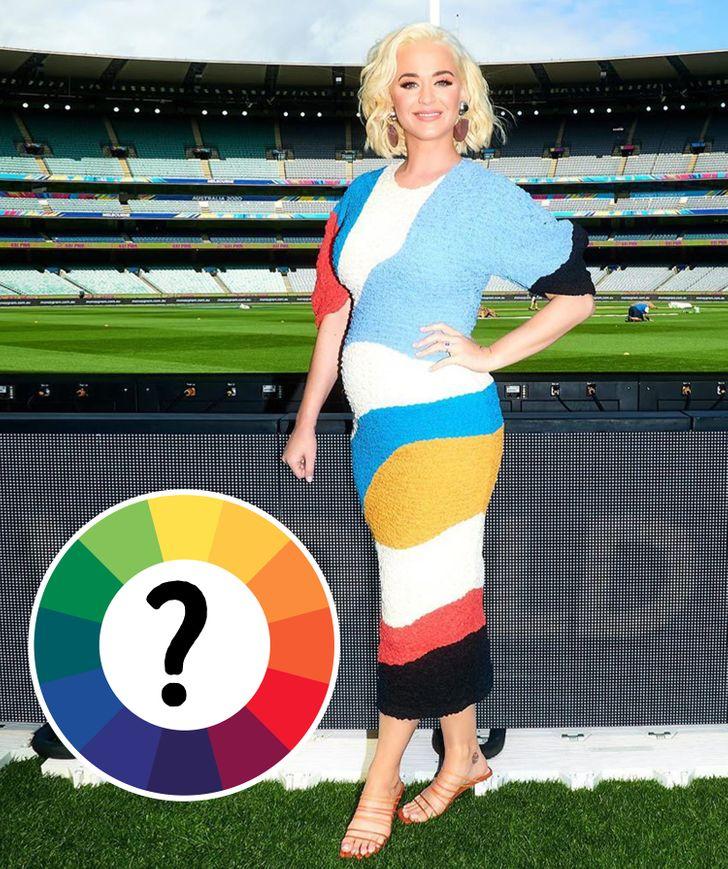23
12/2022
Color harmony, studied years ago and explained through the red, yellow and blue primary colors of the chromatic circle, is used in decoration and graphic arts, but what about fashion?
We tell you that in this formula the primary colors are combined to create secondary and tertiary colors, we can also use it to mix colors with our garments successfully.
Using so many colors together can be seen as an exaggeration, that's why some people don't dare to put them together. However, there are shades that together look really good. With the help of this technique, incredible combinations can result and you will feel even more confident using them by supporting you in this.
According to Adriana Mercado, academic coordinator of the clothing and textile design program at the Universidad del Pacífico, this circle of color can be very useful since “color generates reactions in those who use it but also in those who appreciate it, so so that a harmonious wardrobe in its color will generate a reaction of acceptance and liking in the environment that is presented, it will cause the user a feeling of comfort and security” he said.
How does it work?
The color wheel has three color classifications: primaries, those pure colors; secondaries: colors that arise from the combination of two primaries; and tertiary, which we obtain from the mixture of a basic and a secondary. Three types of compositions that you can play with when choosing the most suitable look.
1. Monochromatic combinations
The designer explained that the easiest combinations to achieve and that Chileans commonly apply are monochromatic harmonies, where everything is the same color, or at least the main garments.

“We seek to connect garments of different styles or materials many times, simplifying having to combine them. However, this uniformity does not always contribute to a good presentation", said Adriana, so you have to be careful.
In monochrome combinations, as the designer explained, we associate shades of the same color, for example, dark green with light green, and they are ideal especially when we want to stylize our figures and avoid making color blocks.
Adriana Mercado
had an English lesson on how to make a McGangbang
— orange Thu May 27 16:33:54 +0000 2021
2. Complementary combinations
Are those in which we associate opposite colors on the color wheel. In all cases it will be a primary color and a secondary one, for example, red with green, blue with orange, yellow with violet.
“The complementary combinations seek to attract more attention, transforming the user into a more protagonist of the scene. Complementary is a combination in which you use opposite colors in the chromatic rose, understanding that there are also opposite intermediate nuances” explained Adriana.
More images
3.Analogous combinations
Are those that are achieved by combining “neighboring” colors, that is, those that are next to each other.
“Similar combinations seek to associate colors of the same nature, for example, earth tones only, or warm tones, this combinatory being a balance between the previous ones, since it is neither so flashy nor so flat and it also adapts a lot to our idiosyncrasy” said the designer.
More Image
If it is a matter of recommending some type of combination in particular, Adriana advises avoiding monochromatic associations unless it is a garment and an accessory such as a dress and a shawl “If the material of the garments is very different, there should always be a different touch, a center of interest that gives it variety”.
If you're more adventurous, the designer recommended going for a complementary combination. "It's good that one of the two colors predominates, otherwise the visual shock is very strong," she said.
“Colours are all beautiful if they are accompanied by a positive attitude and are worn decisively and confidently, even more so today that we are transculturalizing with neighboring countries, we can dare to integrate new, bolder combinations and enrich our expressiveness when dressing he added.
However, he clarified that in order not to exaggerate in our combinations, we must select some color detail that attracts attention and looks more.
“If we use many colorful or patterned elements, the view of others will go from one point to another without valuing them, but if we use a neutral garment and a colorful accessory, the result will always be welcome,” she said.
“Choosing is key, and remember that less is more” he concluded.

- 755
- How to combine clothes using color theory.
Related Articles
The scanner of... Pilar Rubio: we get the truth (and what they don't want to be known) from celebrities
02/02/2022The halo of mystery that surrounds celebrities is always part of their charm, and it is that we never know where they are going to turn out, if they really tell us the truth or if they are people like us when...
50 Best Bedspreads 135 in 2021 - Based on 996 Customer Reviews and 66 Hours of Testing
18/04/2022Yes, Reig Martí Blue QUILT Bedspread for Bed 135 cm VASSILE is one of the most sought-after bedspreads for beds 135, it does not satisfy everyone's needs and it can be a bit expensive. That's why, after passing 66...
30 Top Rated 18th Birthday Balloons
11/05/2022Home » Office Products » 30 Top Rated 18th Birthday Balloons Office Products Gervasio Teodoro January 25, 2022 36 Views0 SaveSavedRemoved 0 Are you wandering around the market to...
30 Best Men's High Neck Sweater for you
24/02/2022Home » Clothing » 30 Best Men's Turtleneck Sweater for youClothesJenaro CardoApril 25, 2021 178 Views0SaveSavedRemoved 0 Improving technology only needs to increase the level of competition in ca...